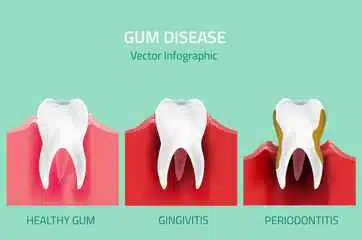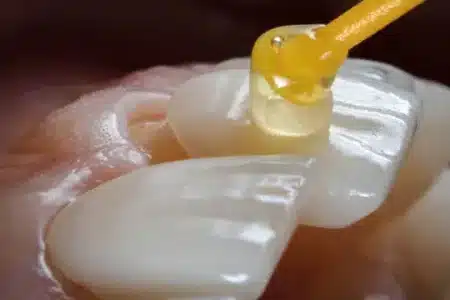Gum Disease Treatments: Prevention, Signs, Surgery, Antibiotics
There are a variety of treatments for gum disease but it depends on the stage of your gum disease, and how you may have to manage and responded to earlier treatments, and your overall well-being.
Three Major Preventive treatment for gum disease that doesn’t require surgery.
A research study by NDA concluded that the mouth is a mirror and gateway of health and disease to the body. Because of this, the mouth can act as early signs and symptoms of a systemic factor for poor health. This includes both harmless and harmful bacteria that cause oral infections, cavities, gum disease, and bad breath.
1. Brushing and Practice Good Oral Hygiene
If you visit your family dentist or dental hygienist for a checkup he/she may recommend the total removal of the plaque and tartar (plaque that builds up over time and hardens on your tooth surface and can only be removed with professional cleaning) from above and below the gum line of all your teeth
2. Practice Good Flossing along Side
3. Scaling and root planing.
Your dental hygienist we perform scaling for you. This is a deep-cleaning, that doesn’t require surgery, it is done under a local anesthetic agent, whereby plaque and tartar from above and below your gum line are removed completely (scaling) and rough spots on the tooth root are made smooth (planing).
Smoothing the rough spots removes bacteria and provides a clean surface for your gums to reattach itself to your teeth. Scaling and root planning is done if your dentist or periodontist as comes out with a final diagnosis that determines you have plaque and calculus (hardened plaque, also called tartar) under the gums that need to be removed.
In some cases, the major preventive treatment that doesn’t require surgery of scaling and root planning is all that you need to treat gum diseases. Surgery is needed when the tissue around your teeth is unhealthy and cannot be repaired with nonsurgical options.
You can also use antimicrobial/antibacterial mouthwashes and antibacterial toothbrush. To kill the infection, your dentist may prescribe certain mouthwashes and gels to reduce the bacteria and the bacteria-filled pockets or ask your dentist before you use one.
Signs of Gum Disease
Receding gums are one of the most signs of gum disease. When bacteria-containing plaque builds up on your gums and teeth, it causes inflammation that may cause severe gum damage to the supporting tissue around it.
The warning signs that you may experience with this disease include gums that bleed when eating, brushing, and flossing because they are usually swollen and tender.
This can lead to receding gum (the gums pulling away from the teeth), and by exposing the roots, and there is the stage where the development of small pockets harbor harmful bacteria. If you notice sores in your mouth or pus in between your gums and teeth, then chances are you may have gum disease.
What are the Surgical Treatments for Gum Disease
Some treatments for gum disease are surgical. Some examples are:
1. Flap surgery/pocket reduction surgery: During this procedure, the gums are lifted towards the back and the tartar is removed. In some cases, irregular surfaces of the damaged bone are smoothed to limit areas where disease-causing bacteria can hide. This procedure decreases the chance of serious health problems associated with periodontal disease.
2. Bone Grafts: This procedure involves using fragments of your own bone, synthetic bone, or donated bone to replace bone destroyed by gum disease. New technology, called tissue engineering, encourages your own body to regenerate bone and tissue at an accelerated rate.
3. Soft tissue grafts: This procedure involves taking gum from the roof of the mouth, is stitched in place, adding tissue to the affected area.
4. Guided tissue regeneration: This procedure Performed when the bone supporting your teeth has been destroyed, this procedure stimulates bone and gum tissue growth. Done in combination with flap surgery. This keeps the gum tissue from growing into the area where it supposes not to, allowing the bone and connective tissue to regrow to better support your teeth.
5. Bone surgery: Following flap surgery, the bone around your tooth is reshaped to decrease the craters. This makes it harder for bacteria to form and grow. This is done due to moderate and advanced bone loss.
Antibiotic Drugs Used to Treat Gum Disease
Chlorhexidine (marketed as the prescription-only brands Peridex, PerioChip, PerioGard, and by numerous other over-the-counter trade names) is an antimicrobial used to control plaque and gingivitis in the mouth or in periodontal pockets. The medication is available as a mouth rinse for root planning and it is used for 7days.
Other antibiotics, including doxycycline, tetracycline, and minocycline may also be used to treat gum disease, as determined by your dentist.
In addition, a nonprescription toothpaste that contains fluoride and an antibiotic to reduce plaque and gingivitis, called triclosan, is often recommended.
Related
- Infographic: Which Toothpaste Type is Best for You?
- 11 Steps to get rid of gum disease at home?
- HOW TO MASSAGE THE GUM AND ITS BENEFITS.
Reference
- Nigerian Dental Association
- WebMD Health





